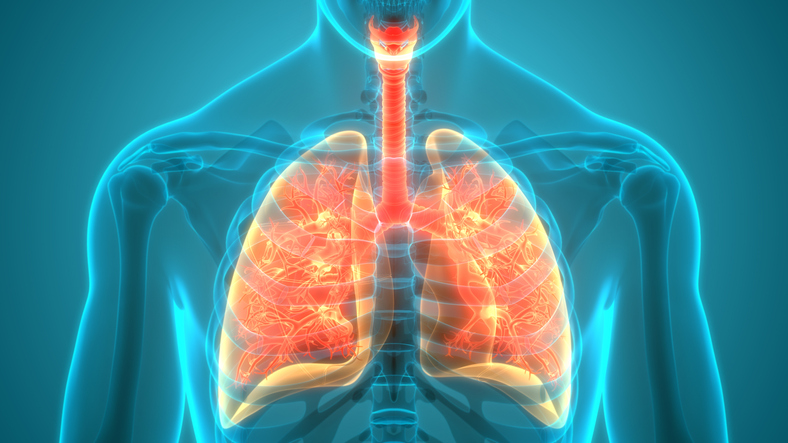Two families, that were separated by distance, but became united as one. Frencesca Greco-Magee was in need of new lungs after she was born with pulmonary fibrosis, a condition that covered her lungs with holes. After being put on double waitlists at two separate hospitals, she moved down to Duke to improve her chances after more than 2 years of failed transplants. Then five days after moving, her prayers were answered and her new lungs came with a new family from Maryville, Tennessee, who just lost their son Bradley. She penned a thank you letter to Bradley’s family and started a connection they all hope will last a lifetime. Watch the full story from WATE-TV 6 News.
A Firefighter’s Life-Saving Double Lung Transplant
By Alina Kesl
Albert Pedroza was energetic and active, but one day on a hike with his son, he experienced difficulty breathing. Fighting the inner voice in his head that told him to brush it off, he could think only of his family as he scheduled a doctor’s appointment to get checked out.
When Pedroza was told that he had scarring on his lungs likely caused by a previous case of pneumonia or asbestos exposure, he accepted the fact that he would experience periodic breathing difficulties. Read the full story from University Health.
A small shift in temperature could have a big effect on how lung transplants are performed worldwide
By Avis Favaro
TORONTO – Canadian transplant scientists say they may be able to help boost the number of lungs available for transplants, all with a simple tweak of temperature.
They’ve been conducting studies that show that storing lungs at 10 C, warmer than the current standard of 4 C, is better for lungs harvested for transplant. They’ve also created a world-first cooler that they say stays at 10 C, boosting the shelf life of a donor’s lungs from six hours to up to 36 hours, and perhaps longer. Read more in CTV News.
First Double-Lung Transplants in Advanced Lung Cancer
By Janet Dyer
Double lung transplant isn’t new; in fact, it’s more common than single lung transplant. But recently surgeons at Northwestern Medicine in Chicago crossed a frontier in the lung transplantation. Two patients with stage 4 lung cancer, Albert Khoury and Tannaz Ameli, are alive and well after successful double transplantation.
The concept of using the procedure in patients with advanced cancer was one of the lessons the Northwestern surgeons took away from the COVID pandemic. Read more in Managed Healthcare Executive.
Assessing the Suitability of Donor Lungs for Transplantation Based on Recipient Factors
The following is a summary of the “Assessing donor organ quality according to recipient characteristics in lung transplantation,” published in the February 2023 issue of Thoracic and cardiovascular surgery by Wadowski, et al.
While overall donor organ utilization remains low, there is a severe shortage of donor lungs concerning need. Organ quality is the most common reason for rejection, but selection criteria can vary. Read more in Physician’s Weekly.
New preservation temperature extends the lifespan of donor organ outside the body
Reviewed by Emily Henderson, B.Sc.
Storing donor lungs for transplant at 10 degrees Celsius markedly increases the length of time the organ can live outside the body according to research led by a team of scientists at the Toronto Lung Transplant Program in the Ajmera Transplant Centre at the University Health Network (UHN).
The prospective multicenter, nonrandomized clinical trial study of 70 patients demonstrated that donor lungs remained healthy and viable for transplant up to four times longer compared to storage at the current standard of ice cooler preservation of around 4 degrees Celsius. Read more in News Medical Life Sciences.
Cool Storage Could Keep Lungs Ready for Transplant Longer
By Dennis Thompson, HealthDay Reporter
MONDAY, April 24, 2023 (HealthDay News) — Storing donor lungs at cool — but not near freezing — temperatures can markedly increase the length of time the organs can live outside the human body, a new study suggests.
Lungs stored at 50 degrees Fahrenheit remain healthy and viable for transplant up to four times longer than those stored at the current standard temperature of 39 degrees, according to new clinical trial results. Read more in U.S. News & World Report.
We didn’t give up hope: Emily’s fighting chance with her lung transplant
By Veronica Giarla
Emily lights up every room she’s in with her giggles and confidence — not to mention her sparkly painted nails and glittery makeup. At 6 years old, she’s able to win people over with her bright smile and electric personality.
All this is made possible because Emily was given the gift of life — an organ donation in what seemed to be impossible circumstances. “It was during one family’s darkest hour that Emily was given the ability to continue to live,” shares Stephanie, Emily’s mom. Read the full story from Boston Children’s Hospital.
Prolonged Mechanical Ventilation After Lung Transplantation to Predict and Establish Risk Model
The following is the summary of “Establishment of a risk prediction model for prolonged mechanical ventilation after lung transplantation: a retrospective cohort study” published in the January 2023 issue of Pulmonary medicine by Gao, et al.
Mortality rates are higher for patients requiring prolonged mechanical ventilation (PMV), often defined as mechanical ventilation for more than 72 hours following lung transplantation with or without tracheostomy.
Read more in Physician’s Weekly.
Researchers confirm successful rehabilitation and recovery of human donor lungs previously deemed unfit for transplant
Study demonstrates that a novel technique for regenerating donor lungs can increase the number of organs available for life-saving transplantation
NEW YORK, Jan. 23, 2023 /PRNewswire/ — A novel method for supporting and recovering donor lungs outside the body shows potential to increase the number of organs available for transplant, according to a recent study published in The Journal of Heart and Lung Transplantation. Read the complete press release on Yahoo.com.


